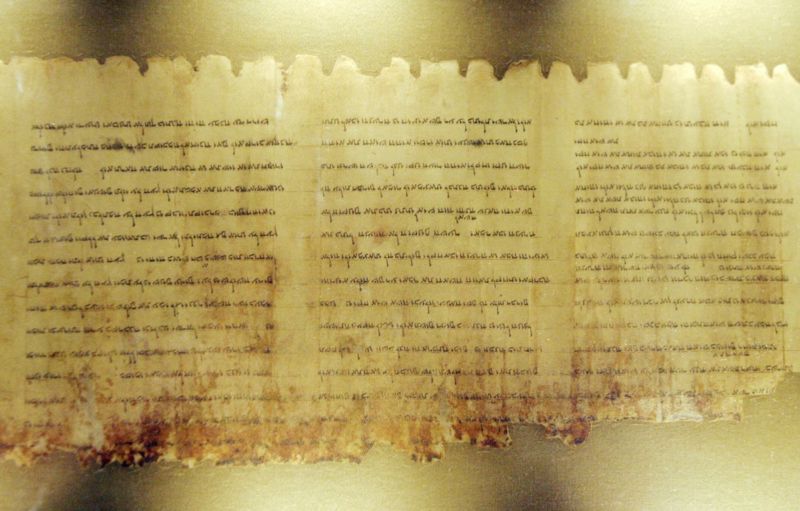The secret to miraculous preservation of a Dead Sea Scroll could be salt coating
Ars Technica » Scientific Method 2019-09-11

Enlarge / Partial view of the Dead Sea Temple Scroll, one of the longest biblical texts found since the 1940s. (credit: Michael Kappeler/AFP/Getty Images)
A team of MIT scientists studied a fragment of one of the famous Dead Sea Scrolls and found the parchment has an unusual coating of sulfate salts. This may be one reason the scrolls were so well-preserved, but it also means the delicate parchments might be more vulnerable to small shifts in humidity than originally thought. The researchers described their work in a recent paper in Science Advances, noting that better understanding of the ancient techniques used to make parchment could also prove useful for spotting Dead Sea Scroll forgeries.
These ancient Hebrew texts—roughly 900 full and partial scrolls in all, stored in clay jars—were first discovered scattered in various caves near what was once the settlement of Qumran, just north of the Dead Sea, by Bedouin shepherds in 1946-1947. Qumrun was destroyed by the Romans, circa 73 CE, and historians believe the scrolls were hidden in the caves by a sect called the Essenes to protect them from being destroyed. The natural limestone and conditions within the caves helped preserve the scrolls for millennia; they date back to between the third century BC and the first century CE.
Co-author Admir Masic, now at MIT, has a longstanding interest in the parchment used for the Dead Sea Scrolls (along with other ancient materials) dating back to his graduate studies in Italy. The scrolls have shown signs of degradation since they were first discovered and moved from the caves into museums, probably arising from early scholarly efforts to soften them up to make them easier to unroll. Scientists like Masic are keen to learn more about them in hopes of slowing or stopping that degradation.